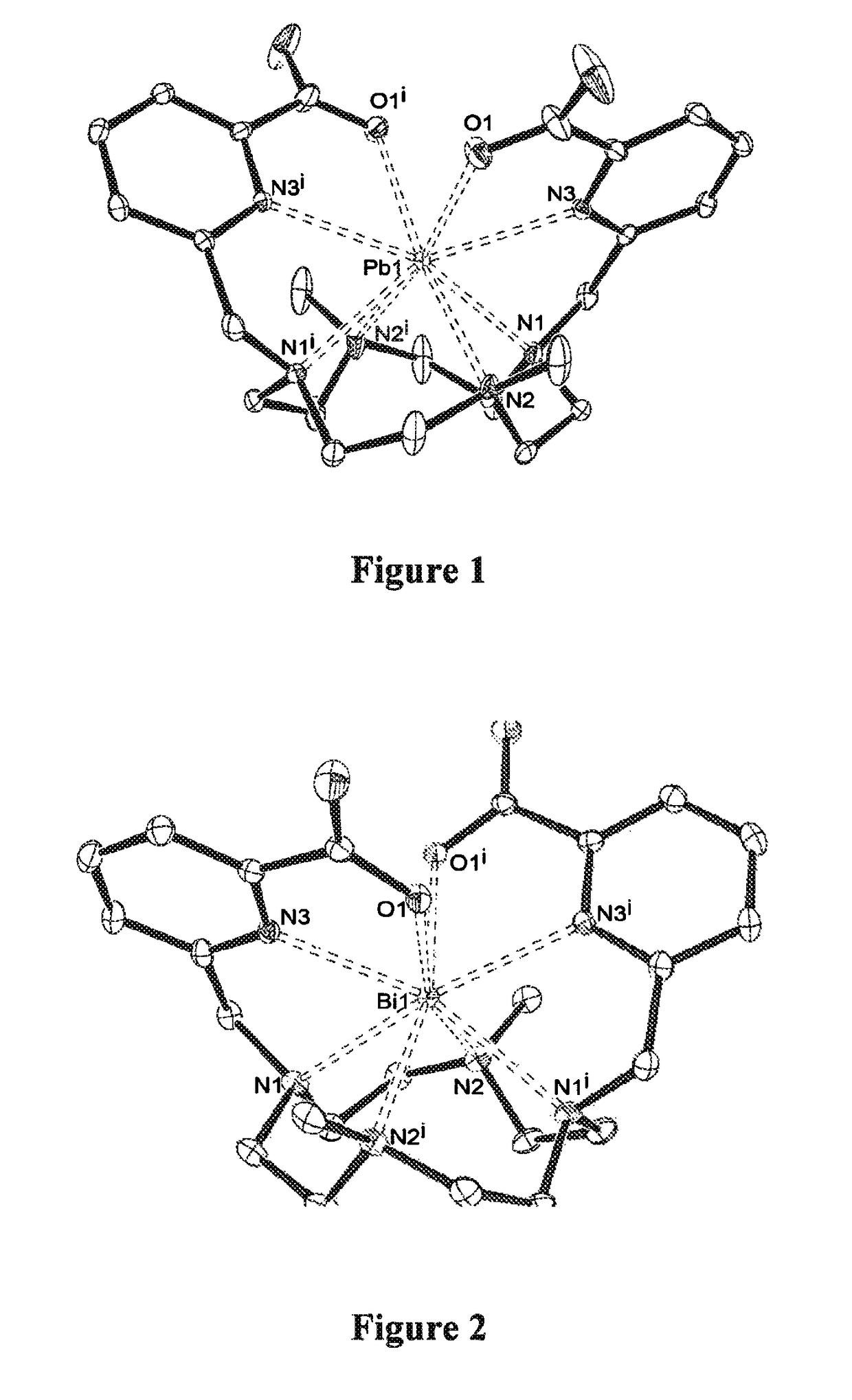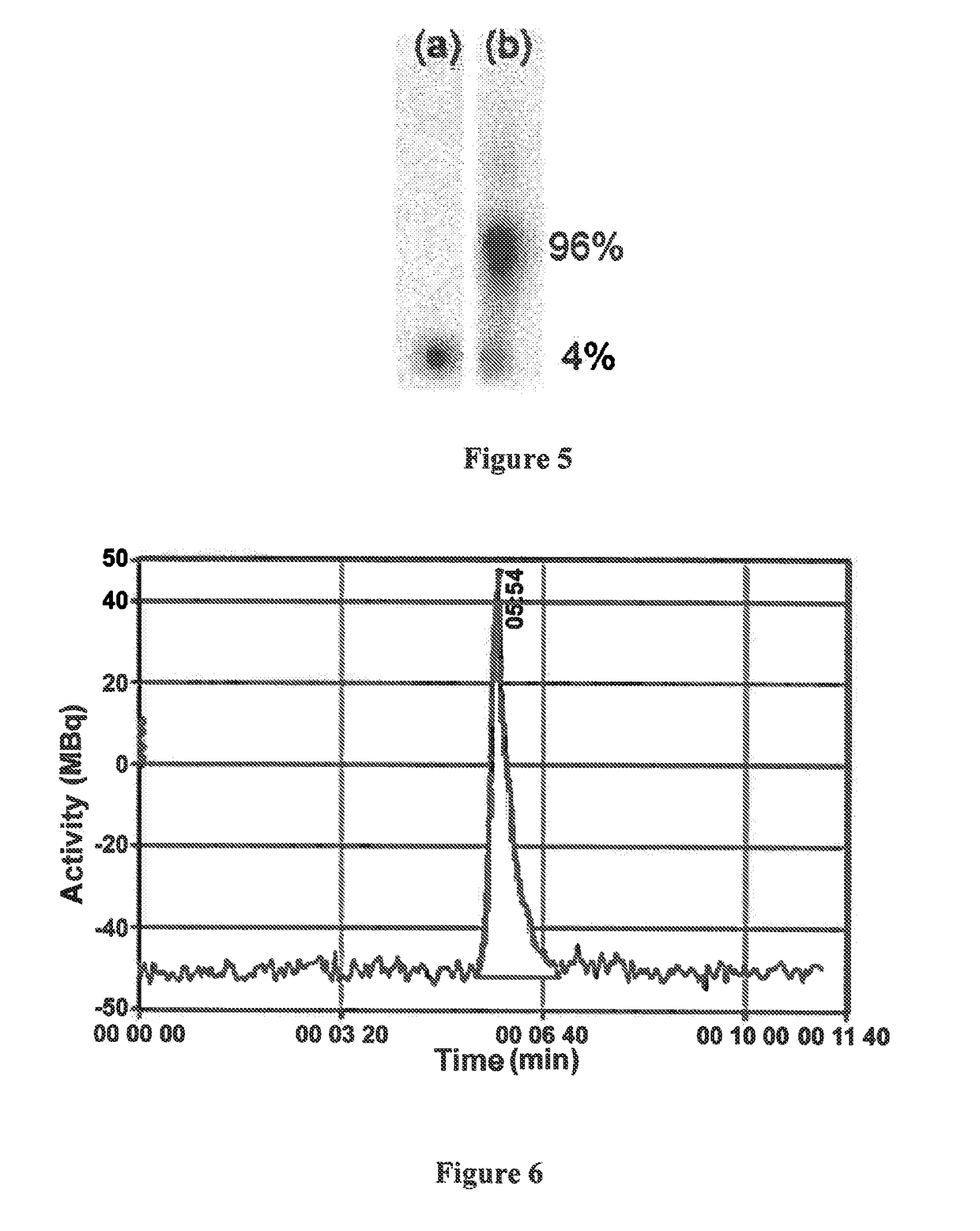Chelates of lead (II) and bismuth (III) based on trans-di-N-picolinate tetraazacycloalkanes
a technology of chelates and tetraazacycloalkanes, which is applied in the field of chelates, can solve the problems of damage to these tissues, has not yet shown any effective clinical application, and cannot be used in their free ion form, and achieves the effect of efficient complexation of ligands
- Summary
- Abstract
- Description
- Claims
- Application Information
AI Technical Summary
Benefits of technology
Problems solved by technology
Method used
Image
Examples
Embodiment Construction
[0062]The invention as well as the different advantages that it presents will be understood more clearly from the following description of embodiments according to this invention, given on an illustratory and non-exhaustive basis.
[0063]These embodiments are described with reference to the appended figures, of which:[0064]FIGS. 1 and 2 respectively represent the X-ray crystal structures of two chelates according to the invention resulting from the complexation of a ligand of formula B here above with lead (II) on the one hand (FIG. 1) and bismuth (III) on the other hand (FIG. 2). In these figures, for reasons of simplicity, the hydrogen atoms are not shown;
[0065]FIGS. 3 and 4 represent the UV / Vis spectra of formation and dissociation of this same ligand with bismuth (FIG. 3) and lead (FIG. 4);
[0066]FIG. 5 represents a thin-layer chromatograph of 213Bi and of the chelate 213Bi-Me-DODPA;
[0067]FIG. 6 represents the HPLC chromatogram of this same chelate;
[0068]FIG. 7 represents the gel p...
PUM
| Property | Measurement | Unit |
|---|---|---|
| pH | aaaaa | aaaaa |
| volume | aaaaa | aaaaa |
| temperature | aaaaa | aaaaa |
Abstract
Description
Claims
Application Information
 Login to View More
Login to View More - R&D
- Intellectual Property
- Life Sciences
- Materials
- Tech Scout
- Unparalleled Data Quality
- Higher Quality Content
- 60% Fewer Hallucinations
Browse by: Latest US Patents, China's latest patents, Technical Efficacy Thesaurus, Application Domain, Technology Topic, Popular Technical Reports.
© 2025 PatSnap. All rights reserved.Legal|Privacy policy|Modern Slavery Act Transparency Statement|Sitemap|About US| Contact US: help@patsnap.com



